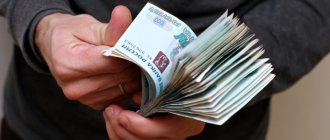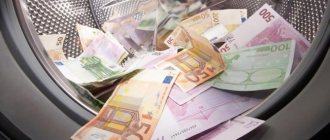The development of the commodity and stock market in Russia is not as intensive as in the West or in the countries of the Asian region, but there is no talk of stagnation. This process is invariably accompanied by illegal actions, the purpose of which is to obtain unjust enrichment. These include market manipulation. Let's look at what this process is in more detail.
Types of securities market manipulation
Market manipulation includes the following actions:
- Intentional announcement of false information, due to which the trading volume, price, supply, demand for financial instruments, currency or goods changed or remained at an inappropriate level (meaning a level that is formed on its own, excluding such information interference). Distribution means - media, telecommunication networks, Internet, etc.
- Similar deviation or maintenance of an inappropriate position of securities on the market by performing transactions with a financial instrument by prior conspiracy among trading participants, their employees or other interested parties. This type is classified as organized trading.
- The execution by a participant, motivated by selfish desires, of transactions, the result of which was a deviation of price, demand, and other things from the usual value or their maintenance at an inappropriate level due to influence on the objects of the transaction. This type of manipulation applies to organized trading.
- Submission by a participant, for his own benefit, of two or more bids of different nature at the same time at an organized auction. Because of this, the purchase price of a financial instrument for these orders became equal to or exceeded the sale price of a similar currency, commodity, etc. Such an action is investigated if, according to these orders, the price, trading volume, etc. due to the influence of the objects of bidding, they were set at an amount different from the usual one. This type is classified as organized trading.
- Carrying out dishonest transactions at organized auctions, which during the bidding period have the highest purchase price or the lowest sale price of the transaction objects, as a result of which their price deviates greatly from the value that would have been formed without such interference. We are talking about repeated interventions during one trading day.
- The execution by a participant for his own benefit of transactions that may confuse other trading participants regarding the price of a financial instrument, currency or commodity, as a result of which the price of the financial instrument and other things began to be maintained at an unnatural level.
- Numerous failures to fulfill obligations on transactions carried out at organized auctions with unchanged objects of transactions, due to which the price, demand, etc. changed unnaturally or remained at a value significantly different from what was expected.
Important! Actions from this list are not considered manipulation in the case where the obligations for the operations have been completed in accordance with the rules of the organizing entity.
Who is the big player?
To begin with, it’s generally worth defining separately what a major player is. On the Internet, it is customary to attach great importance to large players, which generally seems logical. Because they really matter a lot to the market, but the real reason for their behavior is actually mostly trivial.
A major player can be called any banking structure, individual fairly wealthy investors, but individual small players can also be considered a major player if each of them does the same thing. After all, you must admit that if thousands of people start buying this or that instrument, this will affect the price behavior. You don't have to look far for an example. More recently, individual retail investors like Reddit and WallStreetBets have shown what they can do.
I talked even more about the big players in the article at this link.
Of course, this is an example taken out of context; in those papers that were dispersed by forum participants there was a very high coefficient of short interest, i.e. many funds were short in these shares, and by increasing the quotes, the forum members ensured that larger players began to cover their positions, which caused such a movement of thousands of percent.
But even without this example, there are examples in our market. For example, a company releases positive reports – very often you can see that the stock begins to grow quite strongly. This is precisely the effect of small retail investors. It turns out that, albeit temporarily, retail investors are also becoming a major player. I give these examples only to make it clear that a major player is not always just some bank or a very rich guy. These can also be ordinary people, whose collective thinking performs the same action.
Brief content of the article. 185.3 of the Criminal Code of the Russian Federation and comments to it
In Art. 185.3 of the Criminal Code of the Russian Federation defines the concept of “market manipulation” and indicates penalties for its commission.
Note 1 sets out the scope of harm that must arise as a result of criminal acts.
Note 2 explains the definition of excess income. What is meant by loss avoidance is discussed in Note 3 . We will consider these points in more detail below.
The comments provide links to federal laws containing information about certain terms related to bid manipulation:
- Federal Law of July 13, 2015 No. 224-FZ “On public-private partnerships, municipal-private partnerships in the Russian Federation and on amendments to certain legislative acts of the Russian Federation”;
- Federal Law No. 224-FZ of July 27, 2010 “On combating the misuse of insider information and market manipulation and on introducing amendments to certain legislative acts of the Russian Federation”;
- Federal Law of July 27, 2006 No. 149-FZ “On information, information technologies and information protection”;
- Federal Law of December 10, 2003 No. 173-FZ “On Currency Regulation and Currency Control”;
- Federal Law of February 25, 1999 No. 39-FZ “On investment activities in the Russian Federation, carried out in the form of capital investments”;
- Federal Law of April 22, 1996 No. 39-FZ “On the Securities Market”;
- Law of the Russian Federation dated December 27, 1991 No. 2124-1 “On the Mass Media.”
Corpus delicti
According to Art. 185.3 of the Criminal Code of the Russian Federation, the characteristics of the offense are of a material nature and imply the occurrence of several types of consequences:
- price, demand, supply or trading volume have changed;
- causing major harm to individuals and legal entities, the state;
- receiving funds or avoiding losses on a large scale.
The last two types are alternatives in relation to each other: for the offense to be completed, any of these consequences must occur.
Objective side
The objective side of the offense is expressed in the manipulation of tenders, namely:
- deliberate dissemination of incorrect information using the media, information and telecommunication networks and the Internet;
- conducting operations with various objects of trade transactions;
- other actions where there is malicious intent and which are prohibited by the laws of the Russian Federation on combating the misuse of insider information and manipulation of securities trading.
Market manipulation is a complete crime from the moment the following consequences occur:
- large-scale damage caused to citizens, organizations or the state;
- receiving excess income (defined as the difference between income that was received as a result of illegal actions and income that would have been generated without taking into account illegal actions provided for in Article 185.3 of the Criminal Code of the Russian Federation);
- avoidance of large-scale losses.
The objects of the crime are the interests of depositors and the procedure for setting prices for financial instruments.
Subjective side
It is characterized by guilt in the form of direct (that is, conscious) or indirect intent. Since the offense is material, the offender foresees the possible infliction of significant harm and, since he desires benefit, deliberately allows it or treats it with indifference.
If we talk about which entity is carrying out market manipulation, then they are participants in the securities market (including authorized persons of professional participants: brokers, dealers, etc.).
Proof of manipulation
The presence of factors influencing the price, the size of supply and demand in the market proves illegal actions. Simply put, it is necessary to identify the consequences described in the crime clause.
If you or other trading participants suspect manipulation, you should inform the Federal Service for Financial Markets (FSFM) about this. However, the service itself, by assessing the results of trading, checks for all sorts of alarming signals.
The task of the FFMS expert commission is to create an expert opinion, which subsequently influences the assessment and analysis of significant deviations in price indicators, etc.
The peculiarity of detecting the fact of manipulation is that an expert opinion is not enough to make a final verdict, even if it shows a positive result. The verdict is made after receiving all the information that the FFMS may have.
If there are difficulties with the evidence base, a bank accused of carrying out manipulative actions in the securities market may be brought to administrative liability rather than criminal liability. To date, judicial practice in criminal cases is extremely insignificant.
Examples
Swimming pools
Agreements, often made between a group of traders, to delegate authority to one manager to trade certain stocks for a specified period of time and then share the resulting profits or losses."[5] In Australia, section 1041B prohibits the creation of pools.
Whipping
When a trader places buy and sell orders at approximately the same price. The increase in activity is aimed at attracting additional investors and increasing prices.
Stock bashing
This scheme is usually orchestrated through clever posters on online message boards (also known as "Bashers") who make up false and/or misleading information about the target company in an attempt to obtain shares at a lower price. This activity, in most cases, is carried out by posting defamatory messages on several public forums. Fraudsters sometimes work directly for unscrupulous investor relations firms that have convertible notes that convert into more shares the lower the bid or ask price; thus, the lower these killers can push the stock price in an attempt to convince shareholders that they bought a worthless security, the more shares the investor relations firm will receive as compensation. Immediately after the stock conversion is completed and the shares are issued to the investor relations firm, consultant, lawyer or similar party, the killer(s) becomes a friend of the company and quickly moves to profit from a classic Pump & Dump liquidation scheme. their ill-gotten shares. (see P&D)
Pump and dump
A pump and dump scheme is usually part of a more complex, grander plan to market manipulate a security. Attackers (usually promoters) persuade company affiliates and large non-affiliates to put the stock into free trading status as "payment" for security promotion services. Instead of disseminating accurate information about the company, the promoter sends fake emails (the "Pump") to millions of unsophisticated investors (sometimes called "retail investors") in an attempt to inflate the stock price and sales volumes. points. Once they have done both, the promoter sells his shares ("dump") and the share price falls, taking all the money of the defrauded investors with it.
Works
When a group of traders creates activity or rumors to increase the price of a security. An example is the Guinness Stock Trading Fraud of the 1980s. In the US this activity is usually called tape painting
[6] Runs can also occur when a trader(s) attempts to drive down the price of a particular stock, although this is rare. (see "Stock Hacking")
Overclocking (market)
Activities designed to artificially increase the market price of a listed security and create the appearance of large-scale trading for the purpose of making a quick profit.[7]
Washing trade
In wash trading, the manipulator sells and repurchases the same or substantially the same security in order to increase activity and increase the price.
Bear Raid
A bear raid is an attempt to reduce the price of a stock through large sales or short selling.[8]
Lure and squeeze
This is working with a company that is very distressed on paper, with incredibly high debt, consistently high annual losses, but very few assets, making bankruptcy seem imminent. The stock price gradually falls as people who are unfamiliar with the stock short it due to the poor outlook for the company, until the number of short shares exceeds the total number of shares not owned by those aware of the bait-and-squeeze scheme. (call them “knowledgeable people”). Meanwhile, people in the know are increasingly buying shares as they fall lower and lower. When the short interest rate reaches a maximum, the company announces that it has entered into a deal with its creditors to pay off its loans in exchange for shares (or some similar agreement that increases the value of the shares for the benefit of the company), knowing that those who have short positions will be squeezed as the stock price skyrockets. Closer to its peak, people begin to sell, and the price gradually falls again to repeat the cycle.
Quote filling
Quote stuffing is made possible by high-frequency trading programs that can execute market actions at incredible speeds. However, high-frequency trading in itself is not illegal. This tactic involves using specialized, high-throughput equipment to quickly enter and exit large quantities of orders in an attempt to flood the market, thereby gaining an advantage over slower market participants.[9]
Intermarket manipulation
Intermarket manipulation occurs when a trader trades in one market for the purpose of manipulating the price of an asset in another market and benefiting from the resulting price movement effects, rather than with the bona fide intention of profiting from the trade itself.[10]
Manipulation of multiple products
The type of manipulation is possible when settling financial instruments based on benchmarks established when trading physical goods, for example, in the US natural gas markets. The manipulator occupies a large long (short) financial position who will benefit from setting the reference price at a higher (lower) price, and will then trade in the physical commodity markets in such large volume as to influence the reference price in a direction that benefits them financial situation.
Spoofing (finance)
Spoofing is a disruptive algorithmic trading organization used by traders to stay ahead of other market participants and manipulate commodity markets. Spoofers feign interest in trading futures, stocks, and other products in the financial markets by creating the illusion of exchange pessimism in the futures market, when many bids are canceled or withdrawn, or false optimism or demand, when many bids are placed in bad faith. Spoofers place bids or offers with the intention of canceling before orders are filled. The flurry of activity around buy or sell orders is intended to attract other high-frequency traders (HFTs) to cause a certain market reaction, such as manipulating the market price of a security. Spoofing can be a factor in the rise and fall of stock prices and can be very profitable for the spoofer, who can time buys and sells based on this manipulation.
Price fixing
A very simple type of fraud in which the principles publishing the price or indicator conspire to set it falsely and for their own benefit. The Libor scandal, for example, involved bankers setting the Libor rate to benefit their traders' portfolios or to make some companies more creditworthy than they were.
High Closing (finance)
A high close is an attempt to manipulate the price of a security at the end of the trading day to ensure that the closing price is higher than it should be. This is usually achieved by placing manipulative trades close to closing.
Corner Market
In market capture, manipulators buy a large enough quantity of a product that they can control the price, effectively creating a monopoly. For example, brothers Nelson Bunker Hunt and William Herbert Hunt attempted to corner the world's silver markets in the late 1970s and early 1980s, once holding the rights to more than half of the world's silver supply.[11] During the Hunts bullion accumulation, silver prices rose from $11 an ounce in September 1979 to nearly $50 an ounce in January 1980.[12] Two months later, silver prices eventually fell to below $11 an ounce.[12] most of the drops occurred on a single day, now known as Silver Thursday, due to changes made to exchange rules regarding the purchase of goods on margin.[13]
Qualifying features
They mean actions from Part 1 of Art. 185.3 of the Criminal Code of the Russian Federation, committed by an organized community, causing damage on an especially large scale or associated with the extraction of excessive benefits or evasion of waste.
Mandatory conditions for establishing price manipulation in the securities market:
- consequences in the form of deviation or maintenance of a price, demand, supply or trading volume of the transaction objects that differs from the natural level;
- causing great damage to citizens, organizations, and the state;
- generating income or avoiding losses on a large scale.
The first note states that major damage, income or loss must exceed RUB 2,500,000 in total.
In accordance with the third note, avoided losses are understood as losses that did not affect the culprit due to his illegal use of insider information or market manipulation.
Responsibility measures
Illegal actions provided for in Part 1 of Art. 185.3 of the Criminal Code of the Russian Federation, the following may be punished:
- monetary recovery from 300,000 to 500,000 rubles;
- a monetary penalty equal to wages or other income for a period of one to three years;
- forced labor for up to four years with deprivation of the right to obtain certain positions for three years;
- imprisonment for up to four years with the recovery of funds up to 50,000 rubles or in the amount of other income for up to three months, or a ban on the right to work in certain positions for up to three years.
The same crimes, organized by a group that subsequently caused major harm or received income or avoided loss of funds in large quantities, are punishable by:
- monetary recovery from 500,000 to 1,000,000 rubles;
- monetary penalty in the amount of wages or other income for a period of two to five years;
- forced labor for up to five years with a ban on obtaining certain positions for up to three years;
- imprisonment for up to seven years and collection of funds up to 1,000,000 rubles or the amount of the convicted person’s income for up to three years, or a ban on the ability to engage in certain types of activities for three years.
Note. Administrative liability may be established for market manipulation if the offense does not have the characteristics of a crime that can be classified as criminal.
In what cases are they not applicable?
If the perfect manipulation does not fit within the framework described in Art. 185.3 of the Criminal Code of the Russian Federation, and entailed damage or benefit to a lesser extent, it will be punished under Art. 15.30 of the Code of the Russian Federation on Administrative Offences.
An example from judicial practice
An organized group working with investment company “S” carried out market manipulation by selling at auction 13% of the shares of another legal entity “M”. As a result, the value of the securities decreased by 1/3, after which the same group returned the shares, thus receiving an income exceeding 300,000,000 rubles.
The Central Bank of the Russian Federation took away the license from “S” and opened a criminal case for committing market manipulation against the owner of “M”. It was not possible to establish the fact of manipulation, but a new case of embezzlement was opened, which is still being processed by the investigative authorities.
Content
- 1 Examples 1.1 Swimming pools
- 1.2 Beating
- 1.3 Share bashing
- 1.4 Pump and reset
- 1.5 Works
- 1.6 Overclocking (market)
- 1.7 Washing trade
- 1.8 Bear Raid
- 1.9 Lure and Squeeze
- 1.10 Quote filling
- 1.11 Intermarket manipulation
- 1.12 Manipulation of multiple products
- 1.13 Spoofing (finance)
- 1.14 Price fixing
- 1.15 High Closing (finance)
- 1.16 Corner market








